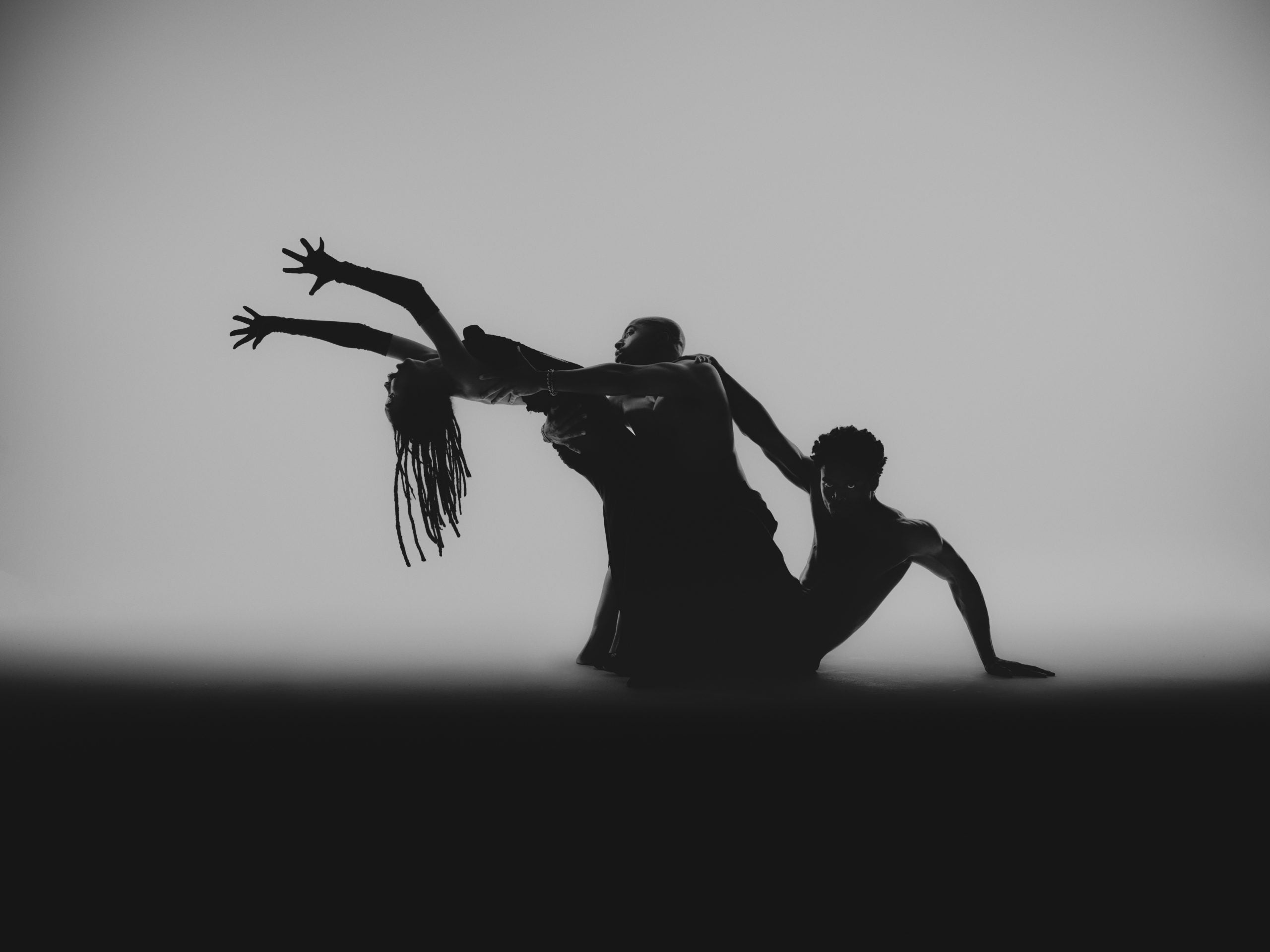
[ad_1]
Justen LeRoy is using his works as the spark that may change the world. Through his upcoming production X’ene’s Witness, the multidisciplinary artist will incorporate sound to highlight Black environmentalism and the current geological age in which humans are the primary influence on climate and ecosystems globally.
Through the performance, LeRoy aims to invoke emotion in his audience, and provide a deeper understanding of the important matters; specifically that of climate disaster and race relations. “I think with an understanding of what is happening to our earth, the community that I live in and South Central, I don’t think we always have the opportunity to think about what’s going on with the earth as we’re thinking about everyday survival,” he tells ESSENCE.

In addition to filling the void created by the barriers of language, Justen employs the history of Black vocal traditions to communicate resistance and liberation. Composed by LeRoy and Alexander Hadyn, the score conveys many of today’s fears and societal issues. Musician and performance artist X’ene Sky shines as the vehicle for Earth’s expression, while movement artist Qwenga interprets the injustices of the planet felt in the physical form.
With X’ene’s Witness, the Los Angeles native will attempt to create a space where climate consciousness can be accessed without words; rather relying on sound to start conversation. Justen feels that the musical expressions of Black artists can act as a sonic expression of Earth, and the sometimes unfair treatment of nature.
“I’m just really passionate about holding space for us to really understand ourselves in relation to the earth,” the Director of Public Programs at MoCA says. “Hopefully through the use of traditional Black sound and the visual, it can create a portal to advocacy and this route of understanding policy.”
ESSENCE: Can you speak to me about how you’re feeling in the days leading up to the premiere of your upcoming opera?
Justen LeRoy: I think for this show, this opera sonic production theater thing—I’m full of gratitude. I’m definitely full of anxiety. I think I’m taking a really big leap here. I don’t think many of the people that support me know me to make an opera or a very extensive theater setup or a score that might be this expansive. I think I’ve taken a really big risk and I’m a little nervous about the outcome, but I’ve definitely surrendered to what that will be. And I think I look forward to being transformed by the experience.
In taking this risk, what was the initial impetus or inspiration for you to do this project?
Last year I had my first museum exhibition at the California African American Museum called, Lay Me Down In Praise, and a lot of that was birthed from my love for Black sound. Black traditional sound, and the evolution of vocal nuances and whatnot. And when I say that, I’m talking about all of the very Brandy, Whitney type of riffs and runs and vocal nuances. And when I say them too, I also mean Stevie Wonder and Donny Hathaway, and trying to really find a home for that in the contemporary art world.
I felt that there’s just so much language in R&B and in soul that never really finds itself being deeply communicated about or explored in contemporary art. I have been working on another project where I was doing a lot of research on just Black sound and environmentalism. And these two things really came together for me where I began to situate our experience as Black people in parallel to what the experience of the earth is right now.
Wow, okay.
I was opening up this one book called Trees, and on the first page that I landed on, it said that trees moan at the hands of whiteness. I was spending a lot of time with writer Fred Moten, and he and I were just talking about those same vocal nuances, all the moans and runs and riffs in certain songs. So that language meeting me at the same time opened up this whole world for me to begin thinking about sonic roots or routes to environmentalism, and how to really express what is uniquely happening to black people in this time and creating a soundtrack for our experience and the earth.
So now with this live show, X’ene’s Witness and the music that will come from that, it is an expansion on that. It’s a live rendition of that same format. I think that it’s really important for me that the sonic is the most important part of my practice. So I thought that doing a live show could hopefully highlight that.
So what went into the decision to have X’ene and Qwenga as vessels to express the earth’s message in this particular production?
X’ene Sky is just a force. She has the most beautiful operatic vocal, one that really shakes the room and makes everybody fall completely silent as soon as you hear her. And she’s somebody where we can talk about the craziest shit, the funniest shit, but we can also get into the rigor of sonics and contemporary art and our lived experiences. And really, I think that we both have a love for theater and for just big productions and drama, honestly. I think that it’s been important for me to always position a black woman as this oracle Mother Earth-like figure. In the first piece, I’m using my best friend’s mom as that. So in this piece, to have X’ene step into that is truly an honor. And to be able to use her gift as a vehicle, honestly, to really see this through is really exciting.
..and for Qwenga, man, he just really situates himself in this world that’s at the intersection of contemporary dance, krump, and buto. And I don’t think I’ve ever seen anybody really move like him. I think that so much of what he does naturally and so much of what he just hears is definitely situated in this thinking of this breaking of the earth, this shifting of tectonic plates when they get a little snagged and there’s an earthquake. He can physically really represent these tensions and these moments of rage and these moments of ecstasy. Yeah, man, he’s just a gift.
This next question—your commitment to the preservation and you expressing your concerns about the environment and how it’s treated? Where did that empathy come from?
You know what, man, I think that it’s really become the space where I know how to really hold the emotions of myself and what I think I see in my community. I think I definitely hold a lot of environmental anxiety. I’m a doomsday anchor, in a way, which is not always positive, but this looming thing that I feel is over us that we’re looking to and don’t really know when it’s going to happen; you see that fear and that anxiety in everybody, but not everybody exactly having language for that. I think I’ve just found that the visual and the sonic can come together to hold some space to help build some language around that.
I think that the bulk of my work will continue to investigate this. And within that, placing resources within the work I do. For this show, in the program when you walk in, there’s a list of Black organizations that are focused on environmentalism in South Central. And there’s some really, really, really amazing organizations I’m excited about, like Black Girl Environmentalist. Which is this amazing cohort of young women from around the country who are really investigating this and really putting themselves in the proper spaces, or forcing themselves into these spaces to talk about this very thing, like not being considered in the conversation of climate change, but being heavily affected by it.
What impact do you feel people of color specifically have on the environment? And what do you think we can do and should do to ensure its protection?
I think that all of us on this planet right now really play a very important role in the next 50, 100 years of what is to take place. I think that Black and indigenous people really have a deep understanding of land, a deep relationship to the soil. And I think that we have this responsibility to really listen. I think that if we can find a way with some kind of grace, find a way to really get back into that innate understanding of humanity and our earth, I really believe that we’re the two groups that can really fix this thing and see us through.
I think that we don’t necessarily have much representation in the climate space. And I think that we could be doing a lot of work or continuing to do a lot of work to figure out how to really advocate for ourselves and how to really create a voice for ourselves within that conversation. Since taking on this new role at the Museum of Contemporary Art as the Director of Public Programs, we have an environmental council. And I’ve been going to a lot of these symposiums and meetings about the environment, and there’s never anybody that looks like me there, you know?
So to hear about how people like the founder of Black Girl Environmentalist, Wawa has really taken it upon herself to identify other young women around the country who are passionate about this same issue. I think that that’s really inspiring to me. And if I can really advocate for or spread the awareness of that work through the work I do, I think that would feel successful to me. And hopefully that can inspire other people to really have a voice in what’s happening to us, you know? And just how we just are so uniquely affected, man. When you think about Flint, when you think about Hurricane Katrina, when you think about what goes down in the Caribbean anytime there’s a hurricane, I feel like for us to get resources or just for there to be this basic care around our lives, it’s just going to take some extra advocacy and understanding.
With X’ene’s Witness, why was it important to you not to rely so much on words to convey your message in this production and instead use the sounds to create conversation?
I think that words can only do so much. When I’m obsessing over a vocal melisma, a vocal nuance, or when I think about our everyday black vocal nuances that really don’t have anything to do with singing, but just a hum, or a grunt or just certain things that we do, there’s so much language packed in that, but you don’t need words to really explain that. I can listen to Donny Hathaway do riffs and runs, or Jazmine Sullivan just riff and run all day and there not be any words in that, but we know exactly what they mean. And I think that that’s just a very interesting world, that I just want to continue to explore this un-worded realm of things that is a bridge between languages that just really communicate the things that we just don’t have the language for. I’m just really interested in the unknown and breaking free of the confines of language and building new worlds of communication and investigating the ones that we’ve already built. I think there’s just a lot of untapped genius in that all.
[ad_2]
Source link







